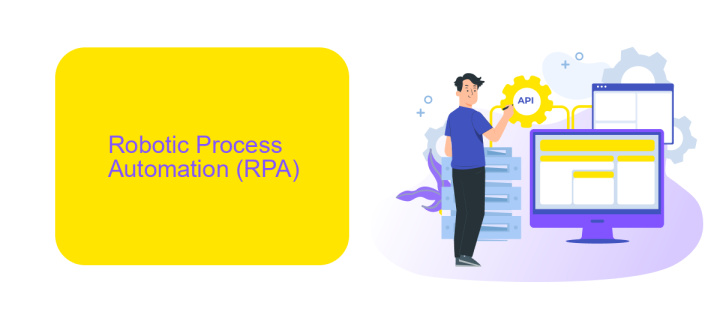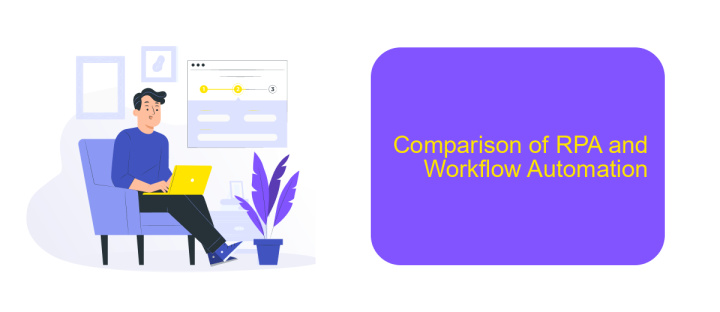Robotic Process Automation vs Workflow Automation Banking
In the rapidly evolving banking sector, the adoption of advanced technologies is crucial for maintaining competitive advantage. Two such technologies, Robotic Process Automation (RPA) and Workflow Automation, are transforming the way banks operate by streamlining processes and enhancing efficiency. This article explores the key differences between RPA and Workflow Automation, and their respective impacts on the banking industry.
Introduction
In the ever-evolving landscape of banking, the adoption of automation technologies has become a pivotal strategy for enhancing operational efficiency and customer satisfaction. Two prominent forms of automation that are often discussed are Robotic Process Automation (RPA) and Workflow Automation. While both aim to streamline processes, they cater to different aspects of banking operations and offer unique benefits.
- Robotic Process Automation (RPA): Focuses on automating repetitive, rule-based tasks using software robots.
- Workflow Automation: Concentrates on orchestrating and managing the flow of tasks and information across various systems and departments.
Understanding the differences between RPA and Workflow Automation is crucial for banks aiming to optimize their processes. For instance, integrating these technologies with existing systems can be simplified using services like ApiX-Drive, which facilitate seamless connections between various applications. By leveraging the strengths of both RPA and Workflow Automation, banks can achieve greater efficiency, reduce operational costs, and enhance the overall customer experience.
Robotic Process Automation (RPA)

Robotic Process Automation (RPA) is a technology that employs software robots to automate repetitive and rule-based tasks within banking operations. By mimicking human interactions with digital systems, RPA can handle tasks such as data entry, transaction processing, and customer service inquiries with high accuracy and efficiency. This not only reduces the likelihood of human error but also frees up employees to focus on more strategic and customer-centric activities, ultimately enhancing productivity and service quality.
Moreover, RPA can be seamlessly integrated with existing banking systems and applications, ensuring a smooth transition without the need for extensive IT overhauls. Services like ApiX-Drive facilitate these integrations by offering a user-friendly platform to connect various software systems, enabling banks to automate workflows effortlessly. By leveraging RPA, banks can achieve significant cost savings, improve compliance, and deliver faster, more reliable services to their customers.
Workflow Automation

Workflow automation in banking streamlines repetitive tasks, enhances efficiency, and reduces human error. By automating processes such as customer onboarding, loan processing, and compliance checks, banks can significantly cut down on time and operational costs. This allows employees to focus on more strategic activities, improving overall productivity.
- Identify repetitive tasks suitable for automation.
- Choose a reliable workflow automation tool.
- Integrate the tool with existing banking systems.
- Monitor and optimize automated processes continuously.
One effective service for integrating various applications and automating workflows is ApiX-Drive. It enables seamless connection between different banking software, ensuring data flows smoothly across systems without manual intervention. Utilizing such services not only improves operational efficiency but also enhances the customer experience by providing faster and more accurate services.
Comparison of RPA and Workflow Automation

Robotic Process Automation (RPA) and Workflow Automation are two powerful tools in modern banking, each with distinct functionalities. RPA focuses on automating repetitive tasks through software robots, mimicking human actions. It excels in handling structured data and integrating with legacy systems without requiring significant changes.
Workflow Automation, on the other hand, streamlines business processes by orchestrating tasks and approvals according to predefined rules. It enhances efficiency by ensuring that tasks flow seamlessly from one stage to another, reducing bottlenecks and manual interventions.
- Scope: RPA targets individual tasks, while Workflow Automation manages end-to-end processes.
- Flexibility: RPA is adaptable to various software environments, whereas Workflow Automation requires predefined workflows.
- Integration: RPA can be easily integrated with existing systems, while Workflow Automation often needs more complex setup.
Both RPA and Workflow Automation can be further enhanced with integration platforms like ApiX-Drive, which simplify the connection between different applications and services. By leveraging such tools, banks can achieve higher efficiency and better data flow across their operations.


Conclusion
In conclusion, both Robotic Process Automation (RPA) and Workflow Automation offer significant benefits to the banking sector, each addressing different needs and challenges. RPA excels in handling repetitive, rule-based tasks, thereby freeing up human resources for more strategic activities. Workflow Automation, on the other hand, provides a structured approach to managing complex processes, ensuring compliance and operational efficiency.
For banks aiming to leverage the best of both worlds, integrating these technologies can be a game-changer. Services like ApiX-Drive can facilitate seamless integration between various systems, enabling banks to automate processes end-to-end. By doing so, banks can achieve higher levels of productivity, reduce operational costs, and enhance customer satisfaction. The future of banking lies in the smart combination of RPA and Workflow Automation, creating a more agile and responsive financial environment.
FAQ
What is the difference between Robotic Process Automation (RPA) and Workflow Automation in banking?
Can RPA and Workflow Automation be used together in banking?
How can banks benefit from RPA and Workflow Automation?
What are some common use cases for RPA in banking?
How can banks integrate RPA and Workflow Automation with their existing systems?
Apix-Drive is a universal tool that will quickly streamline any workflow, freeing you from routine and possible financial losses. Try ApiX-Drive in action and see how useful it is for you personally. In the meantime, when you are setting up connections between systems, think about where you are investing your free time, because now you will have much more of it.

